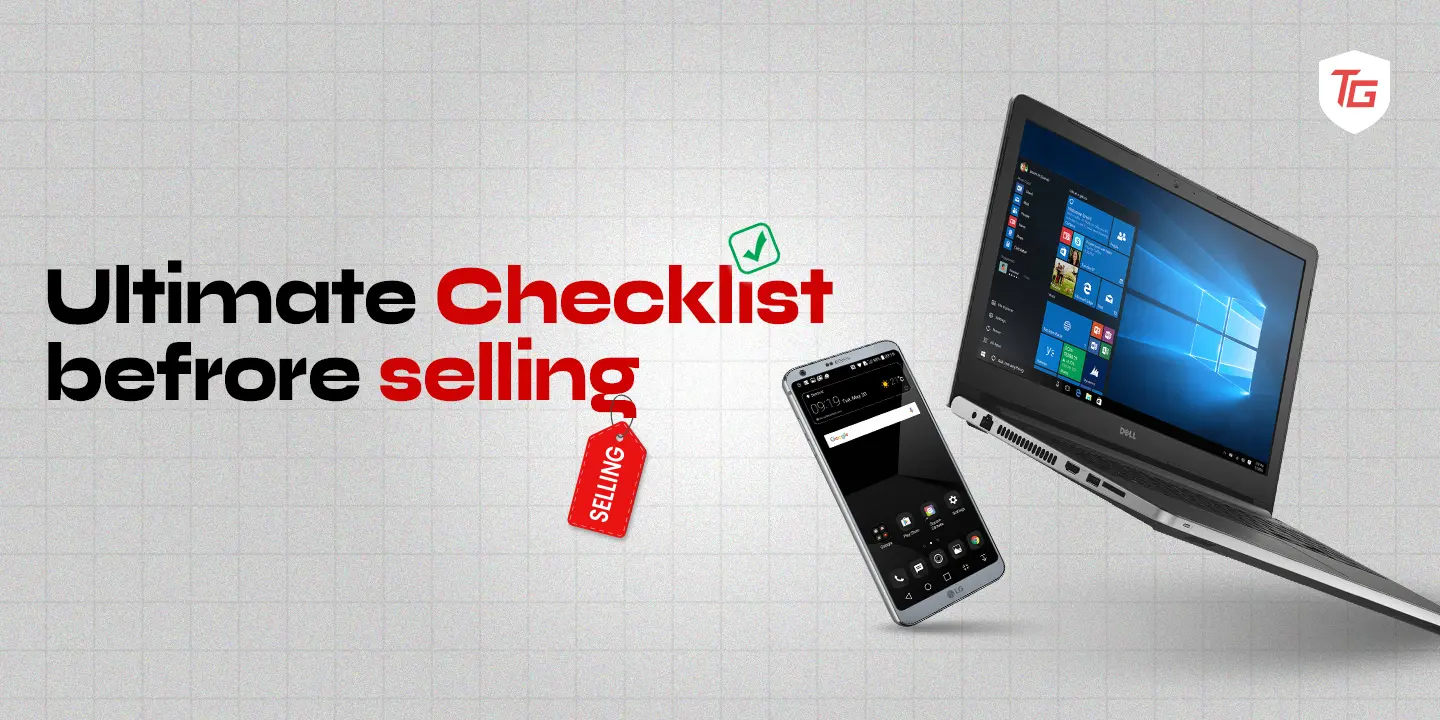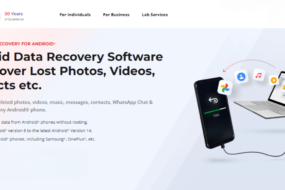Buying a new electronic device is always an exciting upgrade to do. At the same time, it is also vital to sell off your old devices with proper care. Today, our personal digital assistants, like laptops and mobiles, are a gold mine for personal and other information. Selling your old technology is a good thing to do, but only if you ensure that you are doing it correctly. In this guide we have shortlisted 10 things to do Before Selling Old Phone.
Why Do People Sell Their Old Phones and Laptops?
People often trade their old phones and laptops to make room for new ones. Here are some typical reasons for people selling their old assistants.
1. To earn a few extra bucks
This is among the primary reasons and is becoming increasingly popular. The money earned by trading can be used to buy the upgrade. Moreover, you can also get a few dollars off when you buy a new device and give your old one in exchange.
2. Incompatible Technology
Newer software and tools may not work on older versions as technology develops, making them outdated. Selling these products enables people to get rid of obsolete tech and get newer versions..
3. Impact On Environment
By selling used devices, people do their bit by contributing to the environment. Electronic devices, if not discarded rightly, can cause harm to the environment. They contain harmful chemicals and materials that pollute the planet. By selling them, people assist in reducing e-waste and their electronic footprint to some extent. Furthermore, recycling outdated electronics is an eco-friendly way that helps the planetin the long run.
4. Helping Others
While many people would be delighted to purchase a used phone that is still in good shape, as not everyone can afford brand-new devices. Retailing your old devices allows someone else to acquire a gadget that they might not have otherwise been able to buy. This is a sustainable method to contribute to the community and help others.
Safety measures to keep in mind before selling
Prior to trading old gadgets, safety precautions must be taken. In the digital age we live in today, protecting personal data from potential misuse is essential. To avoid unwanted access, erasing the data is the first thing you must do. Take out any memory cards, SIM cards, or external drives. Moreover, making sure no private information, such as documents or passwords, is unintentionally left behind requires careful examination.
By taking safety measures, you can safeguard individual privacy and support ethical electronic waste disposal practices. Safety should always come first when selling a device because this protects the vendor as well as the previous user.
10 things to check before selling old phones or laptops

Whenever you selloff an old gadget, make sure you abide by these things, aiding in a smooth selling process.
1. Data Backup
It’s essential to back up your data before selling your used windows laptops or phones to avoid losing any important information. Move contacts, documents, and images to an external disk or a secure cloud service first. Even if you think you no longer need your important data, make sure it is backed up before doing anything else.
In this manner, you can retail your outdated device with confidence, knowing that your private data and priceless memories are secure. By guaranteeing that data won’t be compromised or end up in the wrong hands, this step puts you at ease.
2. Sign out of synced accounts
These days, device IDs, against login credentials, are used to link user accounts to devices. It’s not always possible to keep someone from accessing your accounts only by logging out of an app. Signing out of any connected accounts before transferring your device is the go-to action.
Go to settings, locate the accounts section, and log out of all of your active accounts, such as social media, cloud services, email, and so on. Your sensitive data is protected by this preventative step, which stops unauthorized access. Remember to de-link any connected hardware or applications as well. Keep in mind that investing a few minutes of diligence now can save you a lot of trouble down the road.
3. Check for any hidden data
To protect your privacy, it’s imperative to look for hidden data when trading out used gadgets. Unexpected ones, such as images, residual app data, or cached passwords, may contain personal information.
Examine every possible location where the data could be hiding. Network switches and routers are two examples. These record requests for connections, URLs, and DNS. Before being sold or disposed of, networking devices need to have their factory reset. Keep a close eye on emails, messaging apps, and cloud storage syncs also.
4. Do a factory reset
The gadget can be restored to its original state after a factory reset. This gives the next user a fresh start, deleting all data and settings. This helps to avoid potential misuse by the new owner by guaranteeing that sensitive data, including contacts, messages, and passwords, is deleted.
Your privacy is safeguarded, and ethical data handling is encouraged when you return the device to its factory settings. Offering peace of mind to both buyers and sellers, a factory reset is an extra step that demonstrates a responsible approach to gadget discarding. This easy-to-implement yet powerful measure helps create a secure and safe digital environment.
5. Remove/Retain Hard-drives
Hard drives must be removed or kept in place to protect the sensitive data. It is not sufficient to delete files because they could still be present in certain parts of the device. If personal data is not managed carefully, it may be hiding in caches, backups, or leftover fragments and provide a security concern.
The benefit of safely maintaining your data and avoiding potential misuse is one that comes with retaining hard disks. For sensitive data and hard drives with large storage capacities, this is especially crucial. Taking off the hard drive guarantees that your data will never be retrieved by the next owner.
6. Dispose Individual Parts
If you’re calling it a day on your aged hardware, it’s best to separate various components like RAM, hard drives, and SD cards in separate bags and dispose of them at different intervals. Doing this will not let anyone collect the pieces and join the dots by re-instilling them, gaining access or retrieving your data.
Added Tip: Do not opt to destroy any part of the gadget yourself. Destroying the inner parts like batteries/hard drives can release toxic materials as a by-product. For that reason, leave the destroying part to professionals.
7. Utilize Expert Data Destruction services
Making use of professional destruction experts can come in handy. These professionals use advanced methods to confirm the complete deletion, averting possible data breaches. Deleted folders may contain hidden data. Professional services carefully remove all traces of private or sensitive data, going above and beyond standard procedures.
Entrusting certified professionals with data deletion upholds ethical and legal standards while also safeguarding your privacy. When giving up your electronics, protect your digital legacy by investing in professional data destruction services.
8. Remove any serial numbers
A device’s serial number is a special combination of letters and/or numbers that serve as its unique identification. Serial numbers are found on a sticker that is hidden, usually on the back or bottom of the gadget.
Remove any kind of serial number written or pasted, be it for your office or for personal use. It’s highly advisable to do so before discarding them. By doing this, chances of fraud will be avoided, including warranty claims from those who find and use thrown-out gadgets.
9. Research Market Value
To maximize profits, do some market research before retailing your old electronics. Setting competitive prices, drawing in potential customers, and guaranteeing a fair deal are all made easier with an understanding of current market trends. The usage and model edition also play a game-changing role in determining the resale value.
Doing good market research will only make your ROI strong and worthy. Additionally, you will also get to know the recent trends in the market. This way, you can make the decision whether to sell the aged devices right away, or wait for some time for the market to scale upwards.
Pro tip: Verify that there are no indications of corrosion or water damage. Moreover, a well-kept battery can increase its worth. You can check the battery’s health by using the settings or third-party apps.
10. Choose the Right selling platform
Authenticity beats everything! When retailing your devices, choosing the right platform is very important. Online marketplaces like eBay and Facebook marketplace are good sources to sell your devices. These are some versatile and verified platforms for selling that can involve in-person transactions.
Analyzing the trade-in options offered by Best Buy is another option to consider. Reputable manufacturers like Samsung and Apple typically give credits when you purchase a new electronic equipment and trade in your old one. Furthermore, don’t rule out locally accessible possibilities like browsing classified ads, going to neighboring electronics stores, or a sale. These might not be the most profitable, but they can be quick and easy.
Bonus tip: If you’re selling online on websites like eBay or Facebook Marketplace, be ready to negotiate. Think in advance the lowest amount you will accept, then adhere to it.
Reconsider Selling Your Old Companions
It is possible to make use of old yet functional gadgets. An outdated computer’s lifespan can be significantly increased by installing Linux, for instance. Furthermore, older equipment can also be used as an emergency backup to new ones, just in case. These might even be your ‘firsts’ and who wants to sell the first devices that they have ever bought?
Conclusion:
It’s important to stick to a thorough checklist before selling your oldies like laptops or phones. Make sure all accounts and sensitive data are deleted by carrying out a complete factory reset to protect your personal data. Examine the device’s functioning, attachments, and physical state. To determine a competitive market price, do some market research.
Finally, to ensure a quick and secure transaction, pick a reputable platform for the sale. Following this checklist ensures a secure process that maximizes value and gives peace of mind.
In case you missed!











